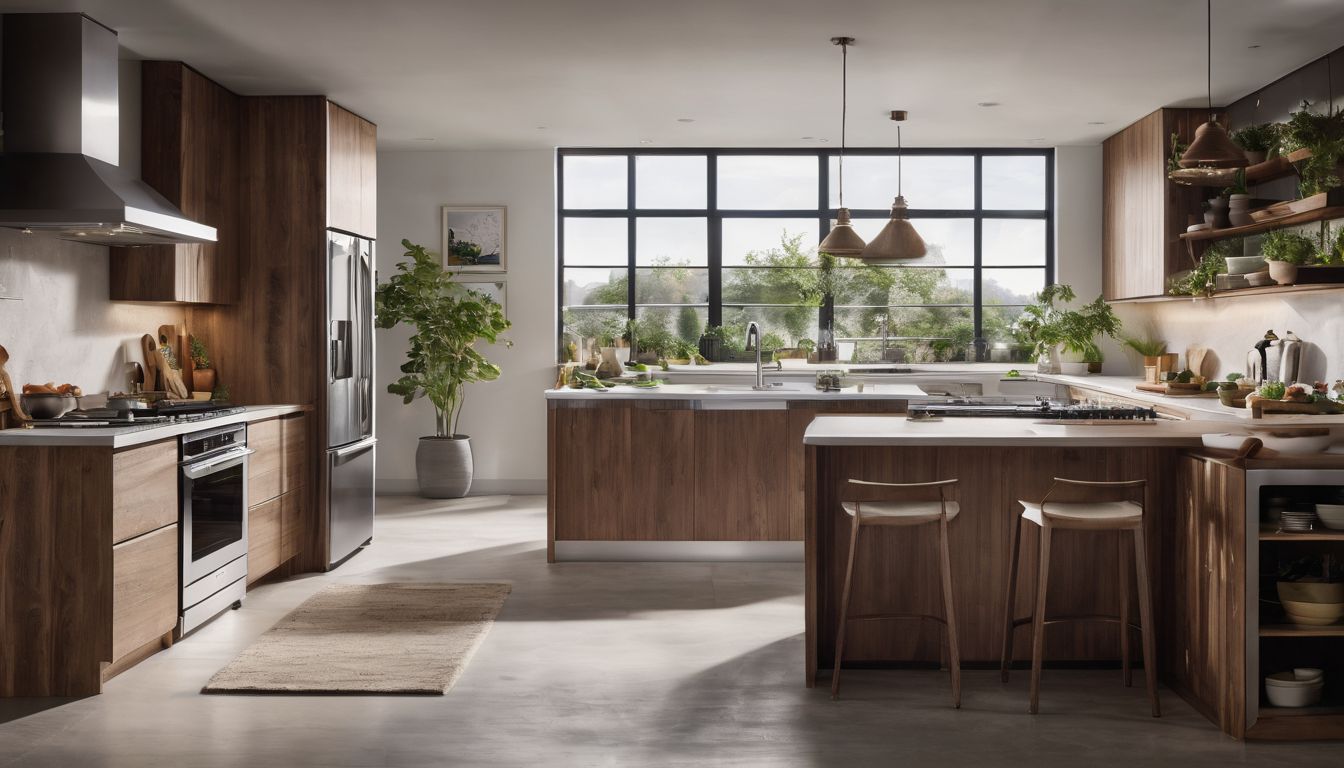Furniture is one of the biggest and bulkiest products that we buy in our lifetime. Fortunately, when you buy eco-friendly furniture, you are doing something good for the environment, for your health, and for your wallet.
BENEFITS for the environment: In order to make most furniture, companies need to use a great deal of energy and extract a lot of natural resources. The high carbon cost of transporting heavy, bulky items contributes directly to global warming, while the deforestation means a decrease in both carbon sinks and biodiversity.1 Eco-furniture minimizes the materials and energy that go into constructing and transporting the furniture.
https://web.archive.org/web/20160404040744if_/https://www.youtube.com/embed/dQZvCqjAgG8iBENEFITS for your health: A recent study revealed that most furniture contains toxic halogenated flame retardant, which can cause cancer or disrupt hormone production. However, safer alternatives are available.2 If you buy natural, reused, or low-toxicity furniture, at least your own furniture won’t be fuming toxic particles into your home.3
BENEFITS for your wallet: While it’s true that some eco-furniture can be really expensive, other ones that use recycled materials are often much, much cheaper than even standard furniture.
Cost: Low to High
The price of your eco-furniture is wildly variable, from the most expensive designer eco-tables to some cheap, second-hand furniture.
Time and effort: Low to Medium
Once you know what to look for, the time and effort you put into buying eco-furniture is essentially the same as the time and effort you normally put into buying furniture.
Instructions: When you go out into the store, remember the basics of sustainable furniture. There are three guidelines to follow when finding eco-friendly furniture. First, make sure that manufacturing your furniture will help preserve the natural environment. Second, look for furniture that reuses materials. Third, think about the transportation of your furniture to lower the carbon footprint of whatever you purchase.
Preserve the natural environment:
1. Durable: Fragile furniture breaks easily, and most people tend to throw out broken furniture, wasting space in a landfill. Buying yet another piece of furniture uses up even more scarce resources. On the other hand, durable furniture will be able to withstand normal wear and tear, saving you money. It might even last long enough for you to sell it when you want to upgrade, which would actually earn you money.4
ii
2. Certified sustainable wood (FSC certified): Trees are a finite resource, and, unfortunately, wood furniture can use up a lot of this resource. However, wood that is certified sustainable wood is either harvested from sustainable tree farms, harvested sustainably from a forest, or is reclaimed wood.5 Some of the most common labels for sustainable wood come from the Forestry Stewardship Council (FSC) the Rainforest Alliance, MBDC C2C (Cradle to Cradle) Certification, and Rediscovered Wood Certification.6
3. Bamboo: Bamboo is actually not a tree, but an extremely sustainable type of grass. It grows quickly, meaning it is renewed in only a matter of a few years. Plus, it is usually grown with little or no pesticides or fertilizers, and treated with little or no chemicals, keeping it less toxic for both you and the natural environment. As with most resources, there is debate regarding the use of bamboo and there is certainly room for progress in making bamboo an even more sustainable and socially responsible product for use in manufacturing furniture.7
4. Low-toxicity: Furniture is surprisingly toxic. Studies show that air quality inside your house, on average, is worse than outside. This is largely due to volatile organic compounds, or VOC’s which emanate off your furniture when they are treated with highly toxic chemicals. When it goes into landfills, this can also seep into the ground and water and harm the surrounding environment. One way to make sure that your furniture is low-toxic is to look for the Greenguard label, which guarantees low-toxicity. Another way is to buy furniture with natural finishes or organic materials, which should have much fewer chemicals.8
5. Sustainable Fabrics and Materials: Some furniture contains fabrics and materials that may be overlooked during the shopping process. Look for organically grown hemp or cotton, which use few pesticides, leaving little impact on the land.9
Reuse materials:
1. Vintage means recycled: Second-hand furniture literally recycles the same furniture, using all the same resources, energy, and processing that usually goes into making a piece of furniture. Plus, most toxic chemicals will have already dissipated most of their gases, keeping your home healthier. However, make sure to look out for lead, which is always toxic and should always be avoided. 10
2. Recycled plastic or metal: While these are both artificial materials, recycled plastic and metal puts these already processed resources to good use.11
3. Sell or exchange your used furniture: It’s understandable that you sometimes want to part with perfectly good furniture. Sometimes you have to move away, or maybe you just realized that it’s not practical or a good fit with your home. Either way, your trash could very well be another person’s treasure. You can either sell it in your own yardsale or online, using popular sites such as Craigslist or eBay. Or, if you are in the charitable mood, try Freecycle, made up of members of a community that give and get items for free.12
4. Easy to disassemble and repair: Far too often, when only a tiny part of the furniture is broken, one has to scrap the entire piece, and buy an entirely new piece of furniture. However, if you could just repair your furniture, you could save yourself a lot of the time, money, and effort of looking for and transporting another piece of furniture to your house.13
5. Reclaimed materials: Reclaimed materials use materials already tossed aside, especially wood. An easy way to find furniture made out of reclaimed materials is to look for the iii
6. Spice up your old furniture: Sometimes, the best way to recycle is just to improve what you already have. If you think your furniture just doesn’t match your style, try painting it a new color. Or, for couches, try getting a slipcover. If you absolutely don’t like the piece of furniture as a whole, you can take it apart and use parts of it in a new and clever way.15
Lower shipping/carbon footprint:
1. Buy local: Buying local furniture minimizes transportation and therefore the carbon cost of moving extremely heavy furniture, whether you have it shipped home or you use your own vehicle to lug it home from the store.16
2. Flat Pack furniture: Flat Pack furniture ships completely flat, but becomes three-dimensional furniture. This both means that it takes a lot less energy to ship it, since it takes up so little space. Another bonus is that, when you’re done with it, it’s even easier for you to ship it to whoever else wants to use it.17
3. Download cardboard designs: For the really cheap, you can reuse your recycled cardboard and make it into perfectly good furniture. This is great for the environment because, other than the shipping it takes to get some lightweight cardboard, there is no extra processing, manufacturing, or transportation of heavy furniture. Download some easy kid-sized furniture here: foldschool.com
Online brands: If you like shopping for furniture in the comfort of your own home, try these online green furniture shops. Many of these brands incorporate a number of the above aspects in making furniture sustainable.
eklahome.com
emeco.net
etsy.com/about.php
greensofas.com
haworth.com
iglooplay.com
knoend.com/ecodesign
kudzuantiques.com
mainecottage.com
manymoonsdesign.com
metrosofa.com
scrapile.com
skatestudyhouse.com
milesandmay.com
surfingcowboys.com
thewoodenduck.com
waybasics.com
vivaterra.com




